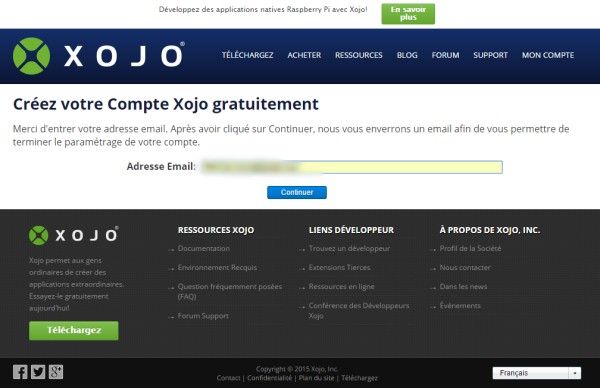


Other single-board computers that are compatible with a 32-bit or 64-bit ARMv7 CPU may also work, but are not officially supported. More information available in the Windows Universal Runtime topic.ģ2-bit and 64-bit versions of Linux are supported.įor best results on 64-bit distributions, build a 64-bit app. Windows apps must have the Visual C++ Redistributable included in the installer or have the DLLs included with the app. The Xojo IDE does not run on Linux for ARM.ĭesktop apps built with the Xojo programming language and IDE will run on any computer that meets the following requirements.ģ2-bit and 64-bit versions of Windows are supported.
#Xojo sports install
You can continue to build 32-bit apps as necessary, but you will need to install 32-bit libraries to run and test 32-bit apps on a 64-bit version of Linux. The Xojo IDE is 64-bit so it only runs on 64-bit versions of Linux. Refer to Linux Notes for more specific library requirements. Ubuntu 14.04 LTS or later (16+ suggested) Linux Mint 16 or later (18.3+ Cinnamon suggested) MacOS Mojave (10.14) or higher is required to build for Apple silicon.
#Xojo sports how to
Refer to the Virtual Machines topic for suggestions on how to optimize your VM. There may be drawing performance issues when editing web layouts when running Xojo in a Virtual Machine.
#Xojo sports update
Microsoft regularly fixes bugs as part of Windows Update so be sure to always have the latest updates applied to your system.Īn SSD is recommended for best performance. You can continue to build 32-bit apps as necessary. The Xojo IDE is 64-bit so it only runs on 64-bit versions of Windows. For example: Var f As FolderItem ('MyPDF.pdf') MyPDF.Save (f) f.
#Xojo sports pdf
Next call the Save method on the PDF document instance and give to it the FolderItem instance as the parameter.
#Xojo sports code
Run the example project and click (or tap) the buttons, you will see how the image rotates 90º clockwise or counter clockwise depending on the button clicked!Īs you can see, we only needed a few lines of Xojo code to achieve this and this same code will work both on Desktop and iOS projects! Next, add the following line of code to it in the associated Code Editor: PreviewImageViewer.Image = (False) Running the App Next, add the following line of code to the associated Code Editor: PreviewImageViewer.Image = ĭouble click the “Counter Clockwise” button to add the “Pressed” Event Handler to it. Use the resizing handles of the ImageViewer added to the Layout Editor so it looks like the one shown in the following screenshot:Īs you can see in the previous image, label the rightmost button as “Clockwise” and the leftmost one as “Counter Clockwise”.ĭouble click the “Clockwise” button and add the “Pressed” Event Handler to it. Now, select the Window1 window to access the Layout Editor and drag to it an ImageViewer control from the Library. Now, let’s create the user interface (UI) to test it (in this case, a Desktop Project), but you can follow the same steps for an iOS project.įirst, drop into the Navigator any image you want to use as the source. Next, type the following snippet of code in the associated Code Editor for the method: Var p As New Picture(SourcePicture.Height, SourcePicture.Width)


 0 kommentar(er)
0 kommentar(er)
